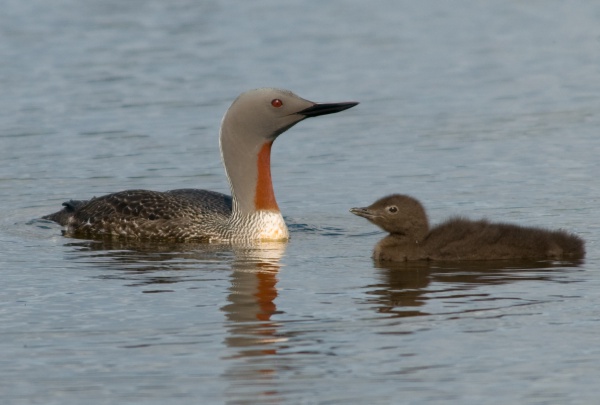Facts About Red-throated loon
The red-throated loon, also known as the red-throated diver, is a fascinating migratory bird found across the northern hemisphere. It is the most widespread member of the loon family, breeding in Arctic regions and wintering in northern coastal waters. Despite being the smallest and lightest among loons, measuring around 55-67 centimeters in length, this bird is quite remarkable.
During the breeding season, the red-throated loon sports a striking reddish throat patch, which gives the bird its name. Their diet primarily consists of fish, though they also consume amphibians, invertebrates, and even some plants. These loons are known for their strong pair bonds, with both partners sharing the responsibilities of nest-building, incubating eggs, and feeding their chicks.
Taxonomically, the red-throated loon is a monotypic species, meaning it does not have any subspecies. Its genus name, Gavia stellata, is derived from Latin, meaning "sea mew." The specific epithet "stellata" refers to the bird's speckled back when it is not in breeding plumage. Adapted to life in the water, these birds have dense bones that help them dive and webbed feet for efficient swimming. In breeding plumage, they are easily recognizable with a dark grey head, white underparts, and the iconic red throat patch.
Despite having a large global population, red-throated loons face several threats. Oil spills, habitat loss, pollution, and fishing nets pose significant risks. Natural predators include gulls and foxes. Fortunately, international treaties offer some protection for this species. They are diurnal migrants, often traveling alone or in small groups, and are strong fliers. Their reliance on fish makes them vulnerable to environmental pollutants.
While not globally endangered, some red-throated loon populations are experiencing declines. Conservation efforts are crucial to mitigate threats such as oil spills, habitat destruction, and fishing nets. These birds also host various parasites and can be affected by diseases such as avian influenza and botulism.
In human culture, the red-throated loon has had a notable presence. Historically, they were hunted for food, and their skins were used for clothing decorations. They also appear in the creation myths of indigenous peoples and have been linked to weather forecasting in some cultures. Countries like Bhutan, Japan, and Finland have even featured this striking bird on their stamps.

 Sweden
Sweden